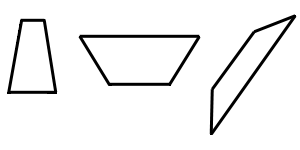Please wait while we process your payment
If you don't see it, please check your spam folder. Sometimes it can end up there.
If you don't see it, please check your spam folder. Sometimes it can end up there.
Please wait while we process your payment

By signing up you agree to our terms and privacy policy.
Don’t have an account? Subscribe now
Create Your Account
Sign up for your FREE 7-day trial
By signing up you agree to our terms and privacy policy.
Already have an account? Log in
Your Email
Choose Your Plan
Individual
Group Discount
Save over 50% with a SparkNotes PLUS Annual Plan!
 payment page
payment page
Purchasing SparkNotes PLUS for a group?
Get Annual Plans at a discount when you buy 2 or more!
Price
$24.99 $18.74 /subscription + tax
Subtotal $37.48 + tax
Save 25% on 2-49 accounts
Save 30% on 50-99 accounts
Want 100 or more? Contact us for a customized plan.
 payment page
payment page
Your Plan
Payment Details
Payment Summary
SparkNotes Plus
You'll be billed after your free trial ends.
7-Day Free Trial
Not Applicable
Renews March 21, 2025 March 14, 2025
Discounts (applied to next billing)
DUE NOW
US $0.00
SNPLUSROCKS20 | 20% Discount
This is not a valid promo code.
Discount Code (one code per order)
SparkNotes PLUS Annual Plan - Group Discount
Qty: 00
SparkNotes Plus subscription is $4.99/month or $24.99/year as selected above. The free trial period is the first 7 days of your subscription. TO CANCEL YOUR SUBSCRIPTION AND AVOID BEING CHARGED, YOU MUST CANCEL BEFORE THE END OF THE FREE TRIAL PERIOD. You may cancel your subscription on your Subscription and Billing page or contact Customer Support at custserv@bn.com. Your subscription will continue automatically once the free trial period is over. Free trial is available to new customers only.
Choose Your Plan
This site is protected by reCAPTCHA and the Google Privacy Policy and Terms of Service apply.
For the next 7 days, you'll have access to awesome PLUS stuff like AP English test prep, No Fear Shakespeare translations and audio, a note-taking tool, personalized dashboard, & much more!
You’ve successfully purchased a group discount. Your group members can use the joining link below to redeem their group membership. You'll also receive an email with the link.
Members will be prompted to log in or create an account to redeem their group membership.
Thanks for creating a SparkNotes account! Continue to start your free trial.
We're sorry, we could not create your account. SparkNotes PLUS is not available in your country. See what countries we’re in.
There was an error creating your account. Please check your payment details and try again.
Please wait while we process your payment

Your PLUS subscription has expired
Please wait while we process your payment
Please wait while we process your payment

Quadrilaterals
Quadrilaterals are prevalent shapes in the world, and thus have been classified carefully. The four sides of quadrilaterals naturally come in pairs, with opposite sides being those that don't share a vertex. Many quadrilaterals have pairs of opposite sides with no special relationships, but then again, some do.
A parallelogram is a quadrilateral whose opposite sides are parallel. Below a few parallelograms are pictured.

A parallelogram has many interesting properties. Its opposite sides, in
addition to being parallel, are congruent. The
opposite angles of a parallelogram are also congruent. Consecutive
angles of a parallelogram, are
supplementary. Also, the diagonals
of a
parallelogram bisect each other. These
properties are pictured below.

Parallelograms can be broken down into different categories as well. Parallelograms with four congruent sides are called rhombuses. Parallelograms with four right angles are called rectangles. And a parallelogram whose sides and angles are all congruent is a square.

A quadrilateral with only one pair of parallel sides is called a trapezoid.
Here some trapezoids are pictured.


These special quadrilaterals are helpful because they can be used as estimates of real-life four-sided shapes, and their properties make calculations easy.
Please wait while we process your payment

